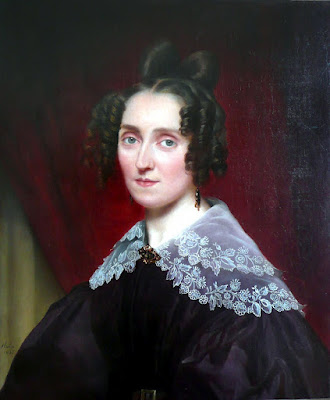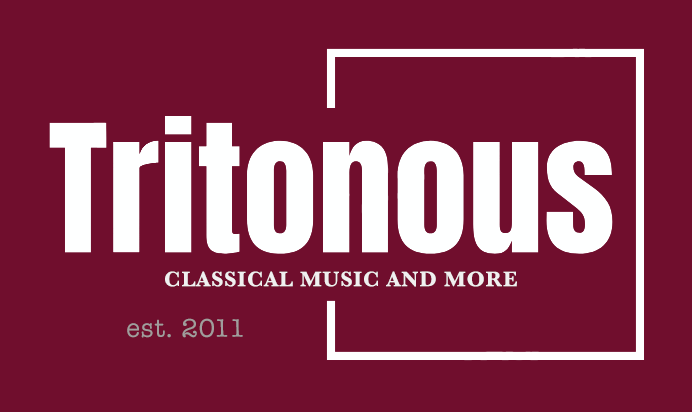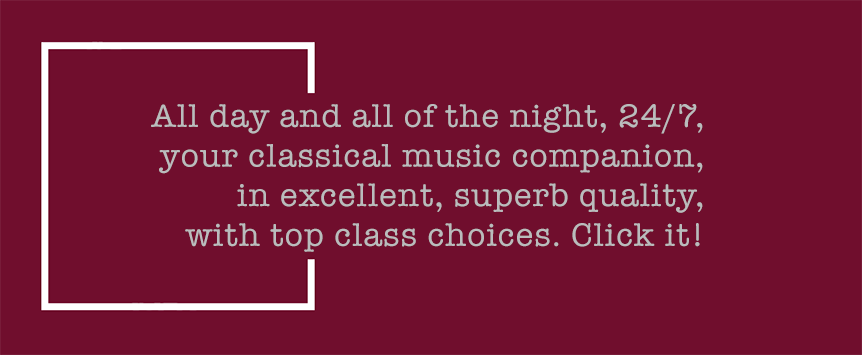 |
| Louise Farrenc in 1835 |
Michael Haydn: Divertimento in G, Louise Farrenc: Nonet in E flat, George Onslow: Nonet in A minor; Zoffany Ensemble – Manon Derome, violin, Rachel Roberts, viola, Anthony Pleeth, cello, Lynda Houghton, bass, Karen Jones, flute, Olivier Stankiewicz, oboe, Anthony Pike, clarinet, Andrea de Flammineis, bassoon, Roger Montgomery, horn; Conway Hall Sunday Concerts
Reviewed 27 April 2025
Two French works for nine players, both from the late 1840s yet by two very different composers in a concert that imaginatively mines music that has been unfairly neglected
Nine members of the Zoffany Ensemble, leader Manon Derome, treated us to a generous helping of musical rarities at Conway Hall Sunday Concerts on 27 April 2025. The programme paired two French nonets, both written in the late 1840s, by Louise Farrenc (1804-1875) and George Onslow (1784-1853), and prefixed these with Michael Haydn’s Divertimento in G. Beforehand, I gave a pre-concert talk, Music Amongst Friends introducing some of the background to the works.
Michael Haydn’s Divertimento in G, from 1785, is one of some 20 or so occasional works that he produced for the Archbishop of Salzburg in whose court he worked. Written for the intriguing mix of violin, viola, flute and horn the work consisted of eight short movements, each keeping to the theme of dance. The whole felt like a charming dance suite, very suited to background music for one of the Archbishop’s banquets. Graceful and well mannered, the music made effective use of the mixture of instrumental colours and was melodically charming.
This was a substantial programme, both the nonets are significant works and the Haydn felt a little to extended for its role as a programme opener. That the players had a lot of ground to cover was suggested by some moments of untidiness in faster movements, and there were moments of untidiness elsewhere in what was undoubtedly an ambitious programme.
When Louis Spohr wrote his Nonet in 1813 (published in Vienna in 1819), the work was the first to use that title and such was its success that Spohr’s line-up of instruments became the standard. We can trace a line from Beethoven’s popular early Septet, through Spohr’s work via Farrenc and Onslow’s teacher Anton Reicha to the two nonets heard in the concert. Both written in the late 1840s, Farrenc was significantly the younger and more famous of the two composers. Onslow, with his private fortune and living in Clermont Ferrand, remained somewhat outside regular French musical life though his chamber music was highly regarded by contemporaries such as Beethoven, Schubert and Schumann.
In four movements, Louise Farrenc’s Nonet began with a slow introduction that seemed to channel Beethoven through more Romantic ears, leading to a flowing Allegro which felt like a civilised conversation between friends. Farrenc made lovely use of the range of instrumental colours and I enjoyed the way the music relied on smaller groupings of instruments interacting. The slow movement had a certain stately elegance to the initial statement of the theme, but then Farrenc and the players had great fun with the way a key role in the subsequent variations passed between the instruments. The scherzo was an engaging delight with interesting instrumental colours and timbres creating rather a vivacious sense of an operatic scene. The finale began slow and serious, with a short oboe cadenza leading to a lively, light-hearted movement fully of fast passagework passed between the instruments.
This was an effective and engaging work, rather like spending an evening with engaging friends, always charming and interesting but never venturing too deep and this sense of enjoyment seemed to rub off on the players too.
Goerge Onslow’s Nonet began with big drama and grand seriousness, before the opening movement launched into furious nervous energy (and some untidiness). Throughout the work, you sensed that Onslow had Beethoven at the back of his mind. The nervous energy continued into the scherzo which was, in fact, rather serious for the name scherzo. The third movement was another theme and variations, a lyrical yet serious theme was then put through a variety of imaginative textures that really put the players through their paces. We returned to a Beethovenian slow introduction at the start of the finale, before launching into the engagingly flowing movement proper. Here the influence of Beethoven mixed with a certain Mendelssonian quality to the music.
Louise Farrenc’s Nonet was so successful on its first public performance in Paris in 1850 that it made her something of a celebrity. I am uncertain of the effect of Onslow’s Nonet after its first performance, but what both composers had in common was that their reputations rather died with them. It is only with groups such as the Zoffany Ensemble that we can explore their legacy.
The blog is free, but I’d be delighted if you were to show your appreciation by buying me a coffee.
Elsewhere on this blog
- Creating a fun day out as well as broadening the mind: Jack Bazalgette on his first Cheltenham Music Festival as artistic director – interview
- From RVW’s Sancta Civitas & Bliss’ The Beatitudes to Reich’s The Desert Music & Birtwistle’s Earth Dances, plus 19 premieres: the BBC Proms 2025
- Fierce virtuosity & sheer delight: oboist Olivier Stankiewicz, soprano Lucy Crowe, violinist Maria Włoszczowska & friends in a captivating evening of Bach, Zelenka, Handel, Vivaldi – concert review
- Dramatic engagement: Francesco Corti directs Bach’s St John Passion with the English Concert at Wigmore Hall on Good Friday – concert review
- Searching for possibilities: composer Noah Max on his four string quartets recently recorded by the Tippett Quartet on Toccata Classics – interview
- Youthful impulse and power: Mozart’s Requiem from National Youth Choir, Sinfonia Smith Square and Nicholas Chalmers – concert review
- Looking at these modern classics anew: Britten’s Canticles at the Barbican with James Way, Natalie Burch & friends – concert review
- This production, will undoubtedly be remembered for years to come: Massenet’s Werther in Paris with Marina Viotti, Benjamin Bernheim & Marc Leroy-Calatayud conducting Les Siècles – opera review
- Compelling & magisterial: Sunwook Kim directs Chamber Orchestra of Europe from the piano in Beethoven’s 3rd & 4th piano concertos – review
- Letter from Florida: Mozart, Verdi, Rossini, Leoncavallo & Mascagni at Sarasota Opera’s Winter Festival – opera review
- Home








